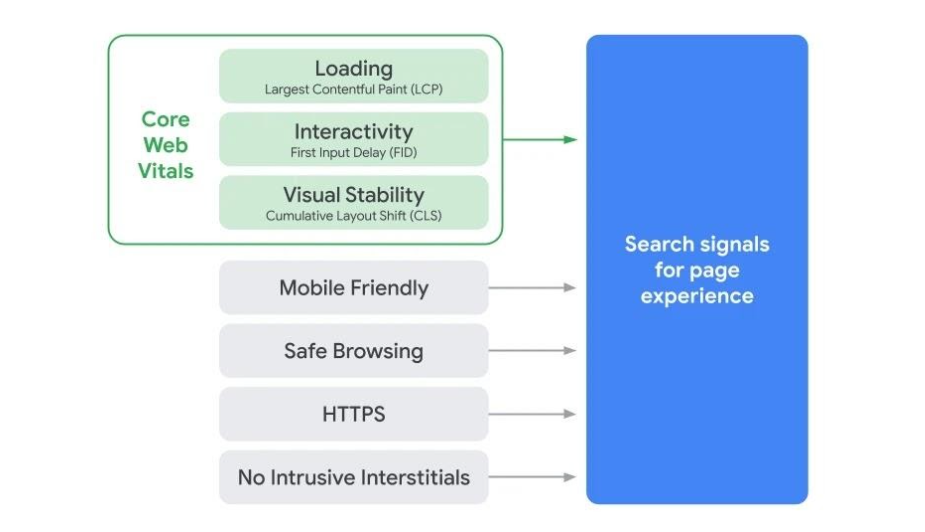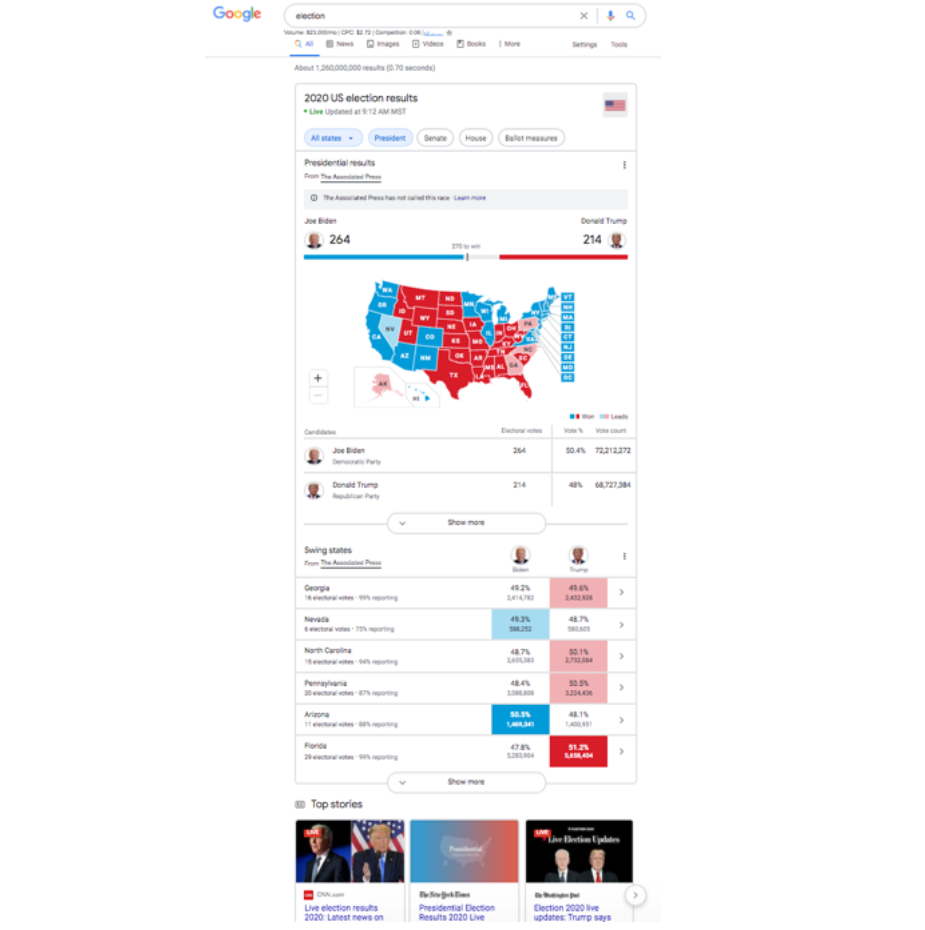
Enterprise Marketing Trends for 2021

2020 showed us how drastically search behaviour can shift each year. 2021 is sure to present its own myriad of challenges and opportunities for enterprise brands across organic search, paid search, and content strategy. Here’s how to navigate them.
Trend No. 1: Greater agility is needed for large sites to keep up with Google’s increasing site performance standards.
Late last year, Google set May 2021 as when its Core Web Vitals update would occur. This update will put greater emphasis on how quickly and efficiently websites load pages to create a positive user experience. Google will also implement a visual callout that will appear alongside URLs in search results showing how a site is performing within the Core Web Vitals Status. This will create greater competitive comparison among search results and could potentially affect click-through rates and site traffic. You can't just be fast. You must be faster than your competitors.

Source: Google
How to activate against this trend:
- Improve paid search performance: Page performance is also linked to paid search performance. Google uses landing page experience to ensure people get what they are looking for via a positive page experience. This assessment decides whether your ad shows in a search result. Ensure your website is performing with quality Core Web Vital metrics before driving paid search traffic. Beyond that, consider how to optimise for both the mobile experience and the ad experience to drive a more efficient click-through rate. Instead of asking “Where do I drive my paid search ad?” ask “Is the website ready to offer the best experience to searchers?”
- Seek out strategic search engine optimisation (SEO) automation: It is critical to structure your teams and strategies so you are nimble enough to respond to this update and future updates as Google continues to sharpen its focus on site performance.
- Seek out opportunities to automate technical SEO monitoring and enhancements so marketing teams can focus on content experiences that deepen relationships with audiences.
- Create processes and checkpoints to ensure developers understand the value of SEO and prioritise Core Web Vitals, as well as overall SEO metrics, within technical teams.
Trend No. 2: Brand content production has greater weight and responsibility with increasing expectations around speed and scale.
With the advent of COVID-19, social justice movements and heightened unpredictability in many industries, 2020 put a spotlight on the importance of nimble processes among content teams. It is imperative for brands to be nimble enough to shift focus quickly and activate immediately with changes in search behavior while also understanding the current landscape.
How to activate against this trend:
- Content be nimble, content be quick: The events of 2020 pushed brand positioning even more into the forefront of social, economic, political and health issues. Examine current content creation resources and channels and increase team communication around what content to publish and when.
- Representation: With increased expectations for high-quality inclusive creative and copy, ensure you have the right representation at your internal tables to align with the current cultural landscape. VMLY&R has invested more into cultivating our understanding of diversity and inclusion via VMLY&R DEI.
- Optimise for new search features: 2020 brought more visual storytelling opportunities in search results (like aggregating short-form videos from TikTok in search results). Ensure teams are up to date on the latest schema and search result page updates to take full advantage. Integrate creative teams into development to complement content with compelling visuals, video or even podcasts.
- Own your brand’s ecosystem: Put less focus on individual keywords and more focus on intent insights and owning your brand’s ecosystem.
- Optimise your digital properties to feed data sources that supply content sources for channels across the knowledge graph.
- Align your teams and messaging across marketing channels such as paid search, ecommerce, and social so these teams and channels communicate as a singular brand.

Google's approach to aggregating content sites into a visual and clickable search result is a prime example of the new visual search result content optimisation opportunities.
Trend No. 3: Rapid evolution of the (uncertain) future shopper experience and ecosystem.
From curbside pickup to bulk buying, COVID-19 has driven significant changes in shopper behaviour. Many marketers ask, “How long will these shifts last, when will purchase behaviour revert to normal?" There is no going back to the old normal. Even if times shift, shoppers will be accustomed to this behaviour and regard current expanded options (such as seamless buy online, pick up in store) as an expectation in the future. Forge forward.
How to activate against this trend:
- Put an extreme focus on optimising the retailer experience: Fewer and fewer purchases are coming directly from sites’ direct-to-consumer product pages as retailer sites grow even more massive. Optimise paid and organic content across retail platforms while considering how your dot-com integrates with retailers like:
- Amazon
- Target
- Walmart
- Online grocers
- Take advantage of platform features to create more engaging shopping experiences: Last year brought new search and retailer updates driven by shopper behavior, and 2021 is sure to bring more.
- Describe product attributes for shoppers when they cannot physically see and touch an item.
- Optimise Google shopping feed to the fullest with attributes, product detail, detailed categories and unique product identifiers.
- Explore Amazon Brand Stores and other retailer landing pages to create immersive brand and category experiences.
- Leverage Recommendations AI to drive more accurate and efficient paid search campaigns.
- Frame experience around audience motivations more than brand story: Focus on telling the stories your brand plays a role in across categories and consumer experiences.
- Lean into different behaviours and what people are looking for across categories in relation to trends in the evolving landscape.
- Scrape and leverage customer reviews for both retailer and owned web content.
Shopper and platform behaviour is tying SEO, paid search and content strategy even closer together in 2021. Consider engaging a discoverability team to elevate your brand in the search landscape.
Alyssa Murfey is connections supervisor at VMLY&R













